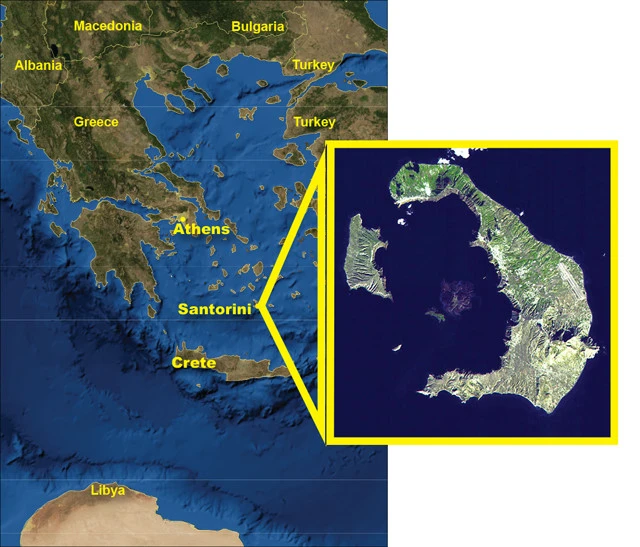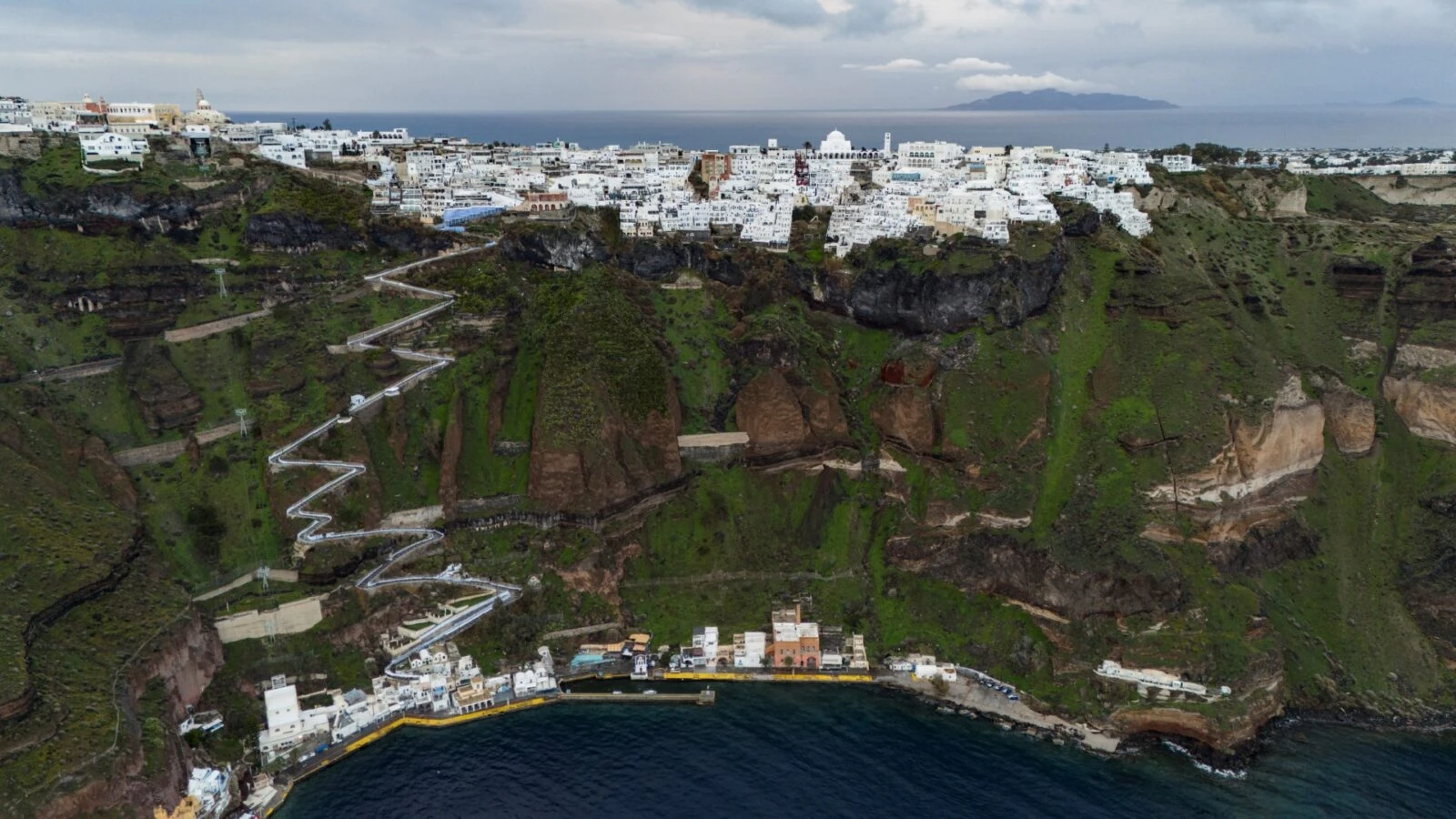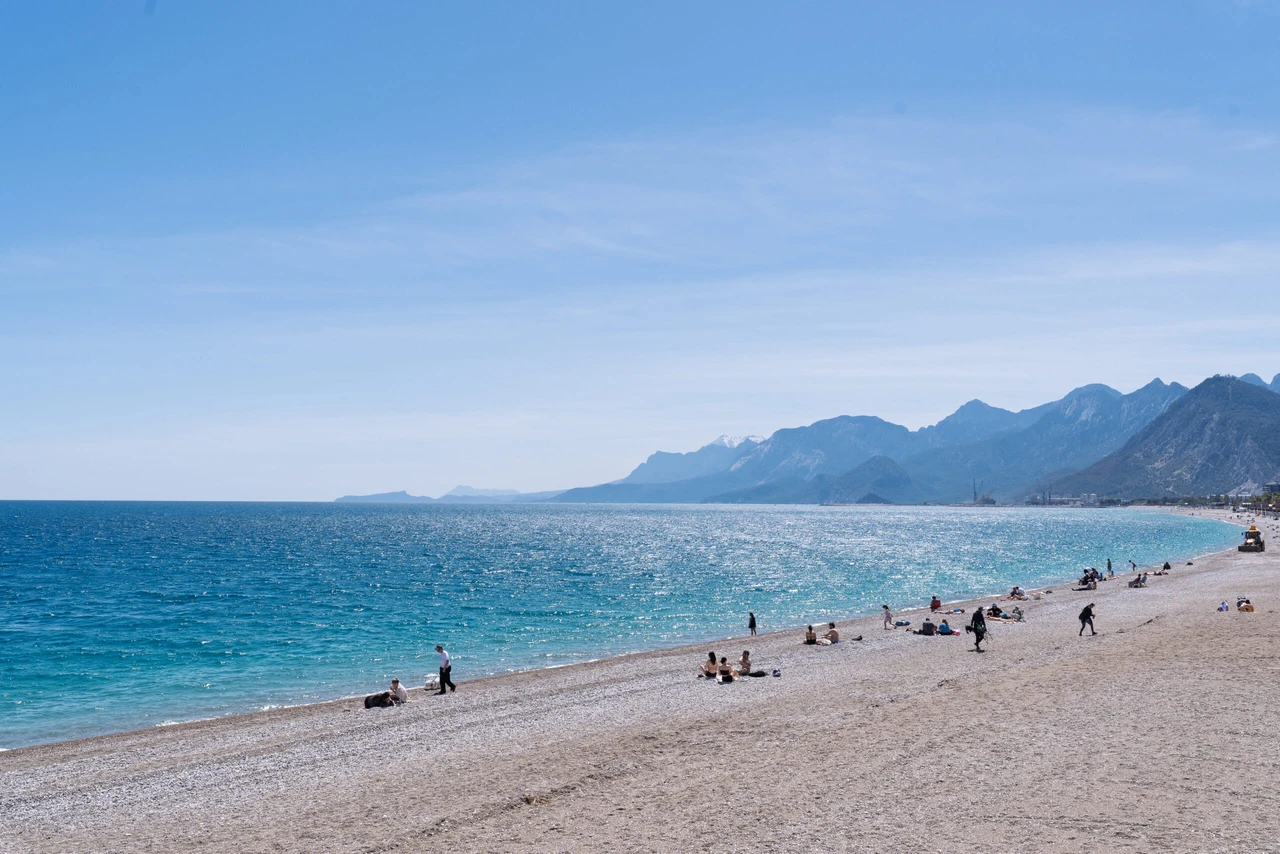Earthquake storm continues in Aegean Sea near Santorini: Türkiye warns of volcanic disaster
 A view of the old port and the town of Fira on the Greek Island of Santorini in the Aegean Sea, captured on February 4, 2025. (AFP Photo)
A view of the old port and the town of Fira on the Greek Island of Santorini in the Aegean Sea, captured on February 4, 2025. (AFP Photo)
The Aegean Sea continues to experience consecutive tremors, with seven more earthquakes recorded near Greece’s Santorini Island between 4:41 a.m. and 6:36 a.m. on Thursday.
Since midnight, seven earthquakes have been detected in the Aegean Sea near Santorini with magnitudes above 4.0. The details are as follows:
- 4.5 magnitude earthquake: At 6:36 a.m., a 4.5 magnitude earthquake occurred in the Aegean Sea at a depth of 7 kilometers (4.35 miles), according to Türkiye‘s Disaster and Emergency Management Authority (AFAD).
- 4.6 magnitude earthquake: At 6:23 a.m., a 4.6 magnitude tremor was recorded at a 7-kilometer depth.
- 4.6 magnitude earthquake: Another 4.6 magnitude earthquake struck at 5:54 a.m., also at a depth of 7 kilometers.
- 4.4 magnitude earthquake: At 5:45 a.m., a 4.4 magnitude earthquake was detected at 7 kilometers deep.
- 4.4 magnitude earthquake: At 5:24 a.m., another 4.4 magnitude tremor occurred at the same depth.
- 4.1 magnitude earthquake: At 5:02 a.m., a 4.1 magnitude earthquake was recorded at 7 kilometers deep.
- 4.1 magnitude earthquake: The first earthquake in this sequence occurred at 4:41 a.m., registering 4.1 in magnitude at a depth of 7 kilometers.
Authorities continue to monitor the ongoing seismic activity closely in the Aegean Sea near Santorini.

Türkiye warns tremors in Aegean Sea near Santorini may trigger volcanic activity
Ongoing seismic activity in the Aegean Sea has the possibility of causing volcanic activity, a report by AFAD and the Mineral Research and Exploration General Directorate (MTA) said Wednesday.
The joint preliminary assessment report by AFAD and the MTA on the earthquakes near Santorini Island said the number of quakes occurring in and around Santorini, which began intensifying as of Jan. 28, had exceeded 900 as of Feb. 5.
The report said the earthquakes, the largest of which measured 5.1, were concentrated northeast of Santorini Island and that their depths ranged between 5 and 25 kilometers.

“The earthquakes are concentrated in the region of the Kolumbo volcano, which has an underwater crater located 6.5 kilometers northeast of Santorini Island,” it added, stressing that the closest earthquake to the Turkish coast is 140 kilometers away.
Impacts of hazards such as tsunami might reach Türkiye
The report noted that the Santorini volcano and its surroundings are an active volcanic complex. The last known eruption took place in 1950 and following the eruption, a tsunami reached the Turkish coast.
It also underlined that volcanism can occur as a result of tectonic movements as well as seismic movements due to a magma chamber.
“Therefore, earthquake swarms such as those that have occurred in recent days should be carefully monitored from both perspectives.
“There is a possibility that the ongoing seismic activity may lead to possible volcanic activity. However, a similar intensity of seismic activity was experienced in the same region for 14 months in 2011-2012 but did not lead to any volcanic activity,” it noted.
“In the event of possible volcanic activity in the region, volcanic activity may occur depending on different geological features such as the type and intensity of the eruption, magma-water interaction and so on.”
The report also noted that the ongoing seismic activity is located in an environment known as the South Aegean Volcanic Arc and that in this geological environment, which has developed to draw an arc along the Athens, Santorini, Bodrum line, there are many active volcanoes such as Milos, Santorini and Nisyros, which have erupted several times in the last 10,000 years.

The Aegean Subduction Zone, which forms the boundary between the Aegean-Anatolian Plate and the African Plate, passes to the south of the arc.
“Along this zone, the African Plate dives under the Aegean Anatolian Plate at a rate of 20 millimeters per year. The Santorini earthquakes occur at shallow depths within the Aegean plate, and it is understood that this earthquake activity has not yet been accompanied by deeper focused earthquakes,” it said.
The report added that the AFAD Earthquake Advisory Board, Turkish scientists and researchers are following the seismic activity in different aspects, asking people not to rely on speculative posts on social media other than the statements made by official institutions.



